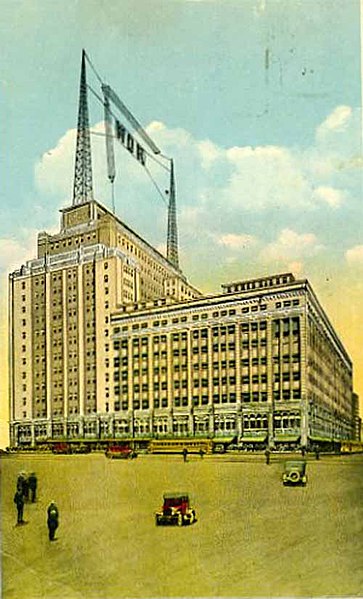A log-periodic antenna (LP), also known as a log-periodic array or log-periodic aerial, is a multi-element, directional antenna designed to operate over a wide band of frequencies. It was invented by John Dunlavy in 1952.
Log-periodic antenna, 400–4000 MHz
Log-periodic antenna, 250–2400 MHz
Log-periodic mounted for vertical polarization, 140–470 MHz
LP television antenna 1963. Covers 54–88 MHz and 174–218 MHz. Slanted elements were used because on the upper band they operate at the third harmonic.
A directional antenna or beam antenna is an antenna which radiates or receives greater radio wave power in specific directions. Directional antennas can radiate radio waves in beams, when greater concentration of radiation in a certain direction is desired, or in receiving antennas receive radio waves from one specific direction only. This can increase the power transmitted to receivers in that direction, or reduce interference from unwanted sources. This contrasts with omnidirectional antennas such as dipole antennas which radiate radio waves over a wide angle, or receive from a wide angle.
A multi-element, log-periodic dipole array
A 70-meter Cassegrain radio antenna at GDSCC, California
An early example (1922) of a directional AM radio transmitter using a long wire antenna, built for WOR, then in Newark, New Jersey and targeting both New York City and Philadelphia in addition to Newark.
Holmdel Horn Antenna in Holmdel, New Jersey (1960s). Built to support the Echo satellite communication program, it was later used in experiments that revealed the Cosmic microwave background permeating the universe.








